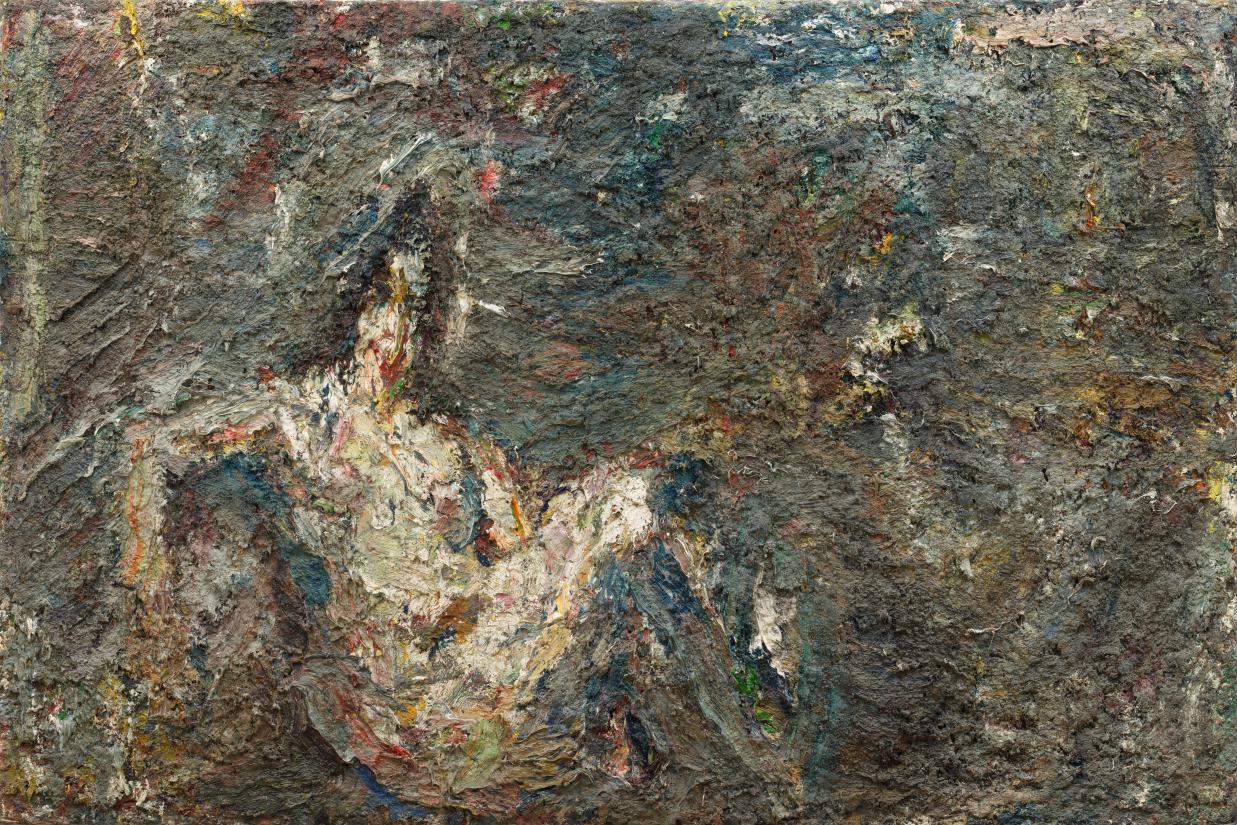Eugène Leroy was a unique artist who is known for his textured impasto paintings, and Grand Nu Assis occupies a central place in the artist’s production. It took Leroy several years to complete the picture, which is so thickly painted that the female nude has become almost undistinguishable.
A build-up of oil paint
Leroy’s distinctive artistic process most of all resembles a sculptural build-up of oil paint. Grand Nu Assis is no exception, and like his other works it is constructed of thickly layered paint. At first glance, the build-up of greys and browns resembles geological sediments and formations. To wrest the image free from this build-up, the beholder has to approach the painting with patience. It is only through careful examination that the canvas can be made to give up its figurative image of a female nude. The build-up of oil paint thus also represents a build-up of time, as the beholder’s gaze needs to complete an explorative journey of discovery to discern an image within the space of the painting.
A glimpse of the body
Leroy repeatedly painted the same image of a female nude. In Grand Nu Assis we see only a hint of a body in skin-tone colours, as the skin and its boundaries are completely dissolved by the thick layers of oil paint. Leroy was interested in the way the image appears and disappears, depending on the temperament of the beholder. In Grand Nu Assis the seated female figure is almost invisible, and looking at the painting, one has the sense of merely catching a glimpse of the body.
About Eugène Leroy
Eugène Leroy (1910–2000) worked in northern France near the Belgium border and developed his distinctive artistic style by working in isolation from the artists defining the main field.
In the future, Grand Nu Assis will be on display at the Louisiana Museum of Modern Art north of Copenhagen, where it is added to the museum’s already considerable collection of Leroy paintings.



